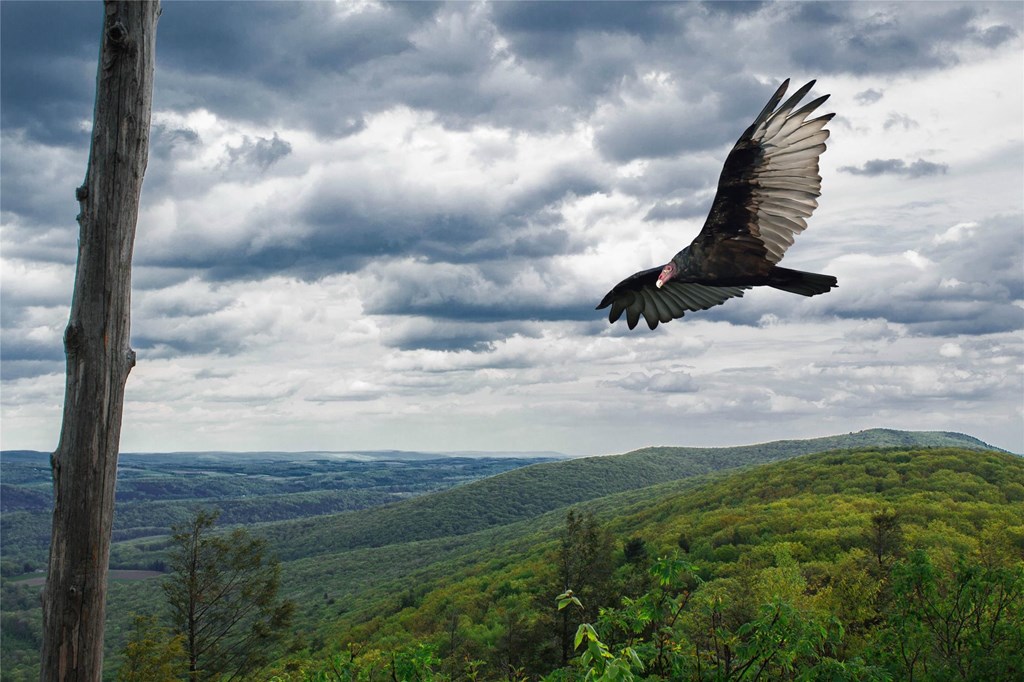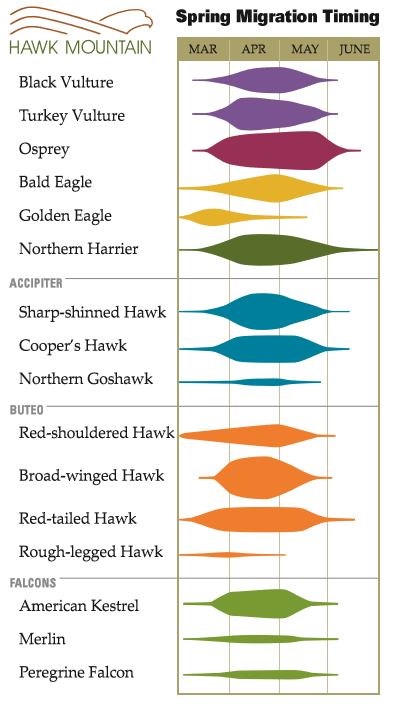Spring Hawk Migration

Hawk Mountain has monitored the spring raptor migration intermittently since the
1960s, using several different observation points. Since 2000 the count has been conducted daily at North Lookout by Conservation Science interns between April 1 and May 15.
This count is designed to capture the second half of spring migration and is used in part as a way of training interns in migration count techniques. Experienced volunteers and staff assist with the training during early April and volunteers also count some days during March.
Annual counts for this 45-day period average 1,063 raptors total with usual one-day peak counts of more than 100 birds seen during late April. Spring flights are best with southerly winds and cloud cover.

When is the best time to see certain raptors?
Hawks can be observed migrating past Hawk Mountain any day from mid-August through mid-December in autumn and in April through mid May in spring.
Most observations of migrating hawks occur between the hours of 8 am and 5 pm. If there is a strong wind, raptors may begin migrating at dawn and fly until dusk. Migrant hawks can be seen all day on windy days. If weather is not windy, we often observe more hawks during mid to late morning and mid to late afternoon (i.e., 930 to 1130 am and 230 to 4 pm). On sunny days without strong winds, birds often use thermals to migrate and thermals are stronger during midday period. The stronger thermals result in migrating hawks flying higher and sometimes farther from the lookouts so sightings can diminish during midday hours. Earlier in morning and later in day when the sun is lower, the hawks often fly lower and closer to lookouts where they can be observed more easily.
The best time to see soaring migrants at Hawk Mountain during spring is in late April and early May, and on days with north winds. On peak days, you can see as many as 300 birds, typically during the last two weeks of April.
Use the chart to identify the average peak migration times for the raptors we see at Hawk Mountain.